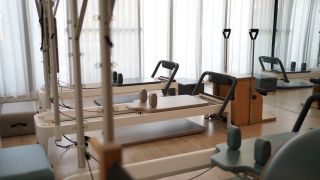Chronic Pain
Goal Setting and Chronic Pain
A Personal Perspective: Personal triumph.
Posted December 4, 2023 Reviewed by Monica Vilhauer Ph.D.
I finally received the green light from my movement therapist to join her introductory pilates reformer class! And as an avowed member of Generation X, believe me I do not use that exclamation point lightly.
Before my spine fell apart in 2012, I was an advanced yogi and I took a very un-yogic pride in the praise I’d receive from my instructors about how bendy, Gumby, stretchable, and otherwise ridiculously flexible my body was. Paired with the strength resulting from a lifetime of gymnastics and rock climbing, I could do all the fun tricks and I loved it. I loved the gifts yoga offered — knowledge of my body, the flowing energy, the strength, and the deep meditation of a solid eight-minute Shavasana at the end of class. I once had an instructor who would ask us to imagine the space between our bodies and the floor, and then half that space and half that space until infinity, and in those moments I swear my body floated ever-so-slightly above the earth.
After my spine fell apart, I had to stop doing yoga. That's because it is so difficult for hypermobile/EDS-me to control how deeply I go into the stretches, and I might injure my connective tissue, speeding up an already dizzying pace of degeneration.
I still grieve this loss, one of so many losses my condition confers. I have never found a replacement for the way yoga helped me to integrate and elevate the experience of my body and mind in a positive way.
But, everyone kept telling me to try pilates. Pilates does not involve mind and spirit in the same way as yoga, but it does require focus and attention to movement, breath work, and strength. And, pilates is all about control, so when done well, it will protect my joints. The problem is, done poorly it’s every bit as dangerous to my joints as yoga. When I took a mat class at the gym or bought an individual class with an instructor unfamiliar with hypermobility, I’d end up with injuries and dislocations, so in my mind I had crossed it off the list of possibilities.
But then I found the movement therapist who changed my life. She is a dancer, trained in pilates and a host of other approaches to movement and body alignment, and she had a best friend with hypermobility. The two of them developed new ways of walking, standing, and generally organizing a skeleton to protect hypermobile joints.
I have been working with her for four years now, and during that time I have built an extraordinary amount of muscle and strength. We set mini-goals for me and we achieved them: walk on the sand during a beach vacation, go for a two-mile hike, then three, then four. Throw a frisbee with my kids. Every one of these achievements makes me more confident and hopeful about my future.
When we first started working together, I wanted to come to regular pilates classes, but she asked me not to because she couldn’t pay close enough attention to me to make sure I wasn’t hurting myself.
But now that I am so much stronger, I asked again — could we make that class the goal for 2023? So we started training on the reformer. If you aren’t familiar with it, the reformer is the special pilates bench that looks like a medieval torture machine, complete with stirrups and pulleys and springs and handles of all sorts. But if I could learn to do it, not only could I get that awesome mind-body focus I love, but also start taking classes that are much cheaper and more ubiquitous than a personal movement therapist, and get stronger faster.

We started with the most basic movements, and it was a serious exercise in one step forward and two steps back. An arm circle would tweak my neck and require three weeks of recovery. A certain kind of kneeling pull just won’t work with my spinal fusions. If you’ve ever had to re-learn how to walk or write or do anything after a major injury, you’ll get how much rocket science it is to unlearn one way to use your muscles and re-learn a new way. But we kept at it and last week she said I was finally ready.
I am so freaking proud of myself. It’s not a common thing in adulthood to set such a clear and measurable goal and achieve it. It’s true that I am having this weakness in my right hand, which we need to figure out before I can actually take the class, but even if I need a surgery, I know my body and muscles will be able to re-learn what it’s like to be ready, which is so much easier than learning it for the first time.
It ain’t an Oscar, and it ain’t the Pulitzer Prize, but it feels like a gold medal to me. Yay pilates! Yay me!


